Twitter is a veritable goldmine of leads, examples, and quotes for your business if you know where to look. As a freelancer, I use it all the time to find new clients and examples for my articles. And Twitter's advanced search makes the process a snap.
I'll show you how to use Twitter's advanced search to find sales leads in your area, keep tabs on your brand, or follow a topic important to you.
How to make the most of Twitter advanced search
Know the difference between search and advanced search
If you've ever searched for a word or phrase on Twitter, you've likely used the site's toolbar search field, mobile app search, or search page for non-users. They work great if you're performing a quick search for a word or phrase. If you need more specific results, though, they'll either come up short or leave you with a headache from having to remember "search operators"—search field phrases that perform an advanced query.
While many search operators are good to know, you don't have to memorize them or manually enter them to get more detailed results from Twitter. Instead, use Twitter's advanced search on its desktop page.
To access it, visit twitter.com/search-advanced, or, after you've done a search, click the three dots next to the search bar, and select Advanced search. The page that loads might surprise you with its many options: you can search Twitter for specific phrases, find Tweets to or from a user, or narrow down Tweets by engagement.
Use a combination of search fields
To find even more specific results, you can combine advanced search fields. Let's imagine you're from Zapier and you're trying to find participants for a webinar on remote work. You could find folks by searching for Tweets that contained "webinar," "remote work," and a "?" and exclude Tweets that had Zapier's username or URL.
Don't just look at "Top" Tweets
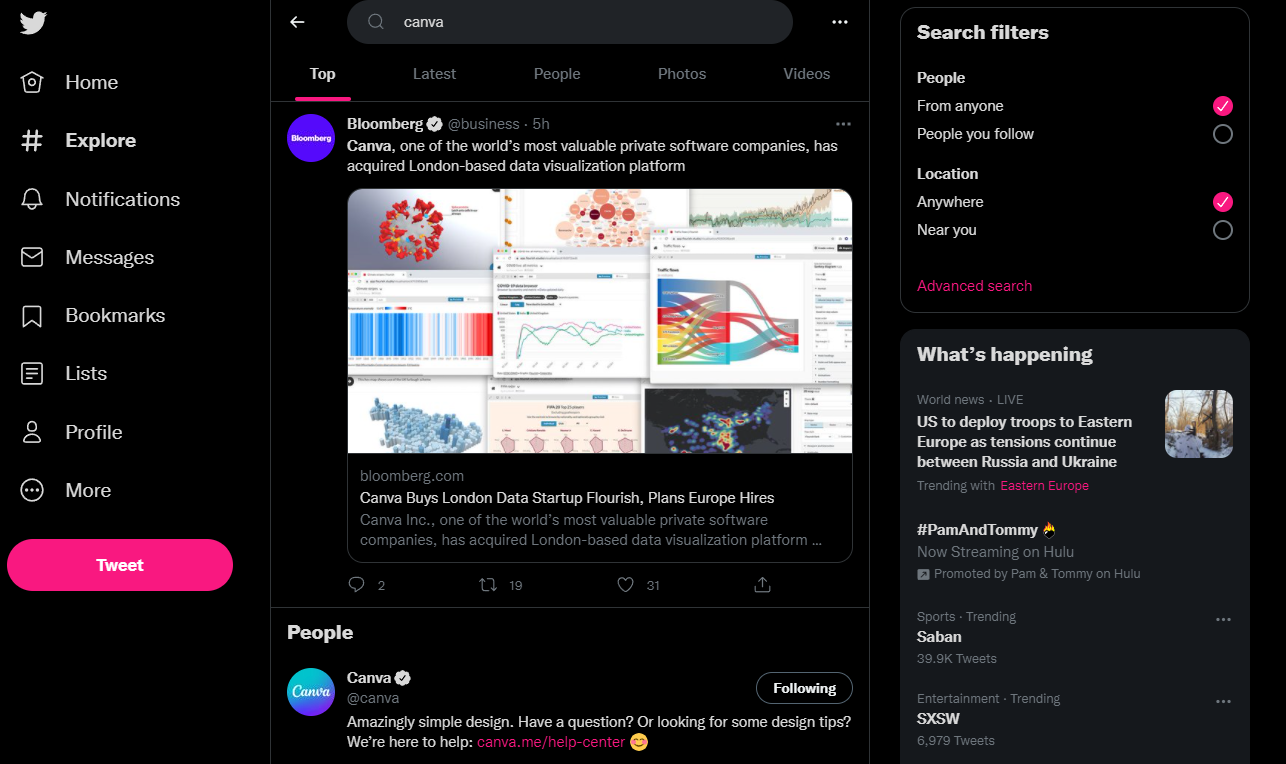
After a search either from the toolbar or advanced search, the first results you see are Top Tweets. According to Twitter, Top Tweets are based on an algorithm: it's the Tweets that lots of people are interacting with and sharing via Retweets, replies, and more—"Tweets you are likely to care about most first."
To see all the results you're looking for, check the Latest Tweets, too—just click Latest on the top of the results Twitter stream.
Explore the different results

In addition to Top and Latest, you can narrow in on a few different types of results, namely people, photos, and videos. Click on the appropriate tab at the top of the Twitter search results page to filter by:
People: Accounts (both people and other entities) whose usernames or bios match your search query
Photos: Tweets that contain photos
Videos: Tweets that include an inline video
If you're on the Top tab, you might also see a Related Topic box at the top of your results with topics that could also be of interest to you.

Learn common search queries
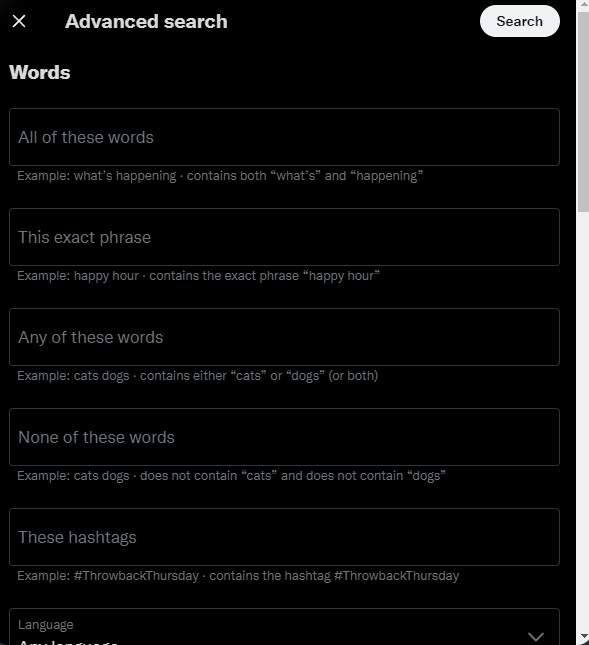
With the basics down, let's dive into the first set of fields in advanced search: words.
1. All of these words
Enter one or more words to find Tweets that contain—in no particular order—those terms. You can also insert one or more phrases here, too, by marking the start and end of each phrase with quotations (e.g., "say hello" "say goodbye").
2. This exact phrase
This field is limited to one phrase, and unlike search fields elsewhere, you don't need to put quotations around your phrase—it does that for you. This can be a helpful field to search for quotes or full names.
3. Any of these words
Each word or phrase (using quotations) you enter is separated by an "OR" when the search query is performed.
For example, if you're searching for brand mentions on Twitter, you can use this field to not only find Tweets with your Twitter handle but with your company name and website as well. So, you'd enter @Zapier Zapier #Zapier zapier.com, which Twitter then converts to contain the search operator "OR"—@zapier OR zapier OR #zapier OR zapier.com.
4. None of these words
This field is easy to overlook, but powerful. Whatever term or phrase you put here will remove Tweets from your results that contain that word or phrase. Try using this field to filter out Tweets with a competitor's name or promotional hashtag. Or, you could get rid of confusion (maybe you're looking for "tea" but not "tea party"). This is a great way to cut through the noise and listen to what's really important.
5. These hashtags
Home in on hashtags with this field. Keep in mind you can search hashtags from other fields as well.
6. Written in (language)
Bring up only Tweets that are written in one of the many language options (nearly four dozen) listed in this field.
Find Tweets from and to specific users
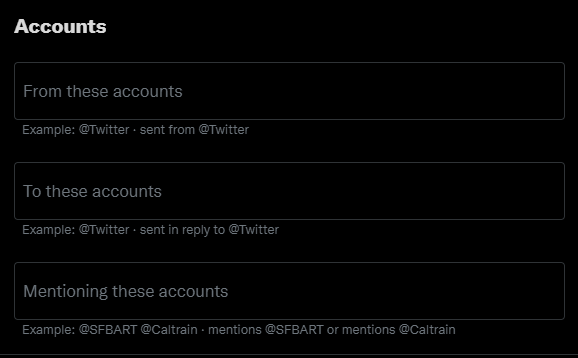
The next three search fields allow you to narrow in on specific users that are either the author or recipient of the Tweet or are mentioned in it.
From these accounts
Get Tweets sent from specific accounts. Enter their names here with or without the @ sign.
To these accounts
Discover Tweets replying to a certain account. Again, just enter the username of one or several accounts as needed.
Mentioning these accounts
Look for Tweets that mention a specific account. Type in one or more usernames.
Filter Tweets by replies and links
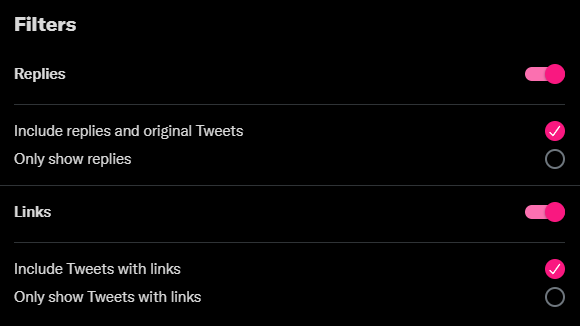
The Filters section of Twitter's advanced search lets you choose whether you want to see replies or Tweets with links. You can toggle replies and links on and off. If you decide to toggle either option on, you can also decide if you want to only see that type of Tweet.
Set minimum engagement levels
Sometimes, you need to find Tweets with at least a certain number of replies, likes, or Retweets. These results can help you join high-impact conversations or get in touch with influencers in your niche.
Minimum replies
This option limits your search to Tweets with the minimum number of replies you set. It's great for finding Tweets that generate buzz, but you might also want to set a minimum number of likes to avoid results with the dreaded "Twitter ratio."
Minimum likes
Use this field to set the minimum number of likes you want a tweet to have to appear in your results. Tweets with higher like counts tend to bring higher quality to their intended audiences.
Minimum Retweets
Enter the minimum number of Retweets for your search results' Tweets to have. Tweets with a high number of Retweets have a lot of visibility in their niche.
See Tweets by a date range
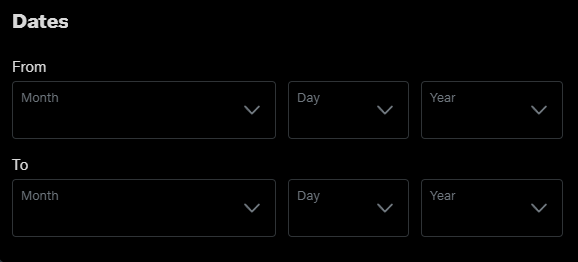
This feature makes it incredibly easy to search for Tweets either before or after a date or between two dates. Leave the From field empty if you want to look for Tweets before a certain date, and keep the To field empty if you want to see Tweets after a date.
Don't forget Twitter's normal search filters
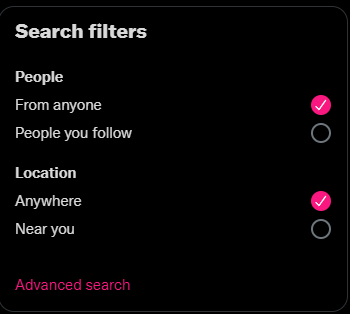
After you finish putting in your advanced search parameters, check out Twitter's regular search filters on the upper-right of the regular search page.
Here, you can limit your results to Tweets from people you follow only. This filter's useful if you're looking for a Tweet you saw on your timeline or want to look for Tweets only in your niche. You can also filter for Tweets posted anywhere near the location you set for your account.
Bonus tip: Looking for a more detailed location search? Use the "near:" and "within:" operators to find Tweets within a certain distance of a place. For example, if you wanted to find marketers within 10 miles of Manhattan, you'd put marketers near:Manhattan within:10mi in Twitter's search box. Instead of a location name, you can also use its geocode—exact global coordinates—pulled from Google Maps.
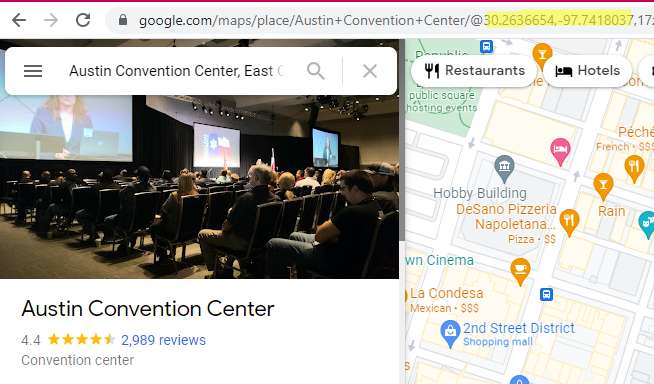
Save your search
With the tips above, you'll be able to write the best query for your Twitter advanced search. And after you've done so, it'd be a shame to let it disappear, so don't miss the feature that lets you save your search. (You'll need to be logged in to Twitter to see the option.)

Click the three dots next to your search box, then select Save search. To later access a saved search query, just click in the toolbar search field, which also shows recent searches.
Supercharge your business with Twitter
Once you learn the ins and outs of Twitter's advanced search feature, you'll give yourself a leg up on your competition. While most folks go to Google first for leads and examples, you'll have Twitter helping you find unique information related to your industry.
Now that you know how to research with Twitter, why not try using it to market your business? It's a powerful way to spread the word about your business and build authority in your niche if you have lots of customers who use it.
This article was originally published in July 2017 by Danny Schreiber.





